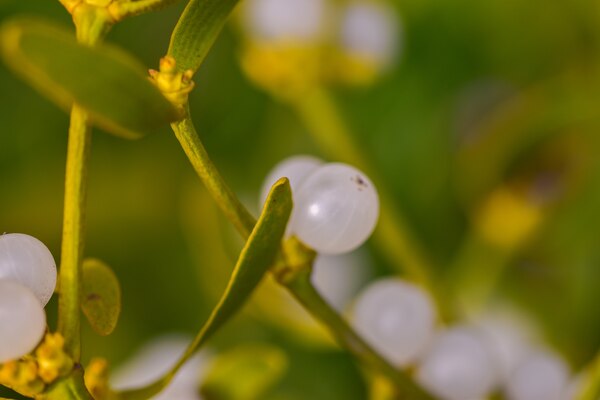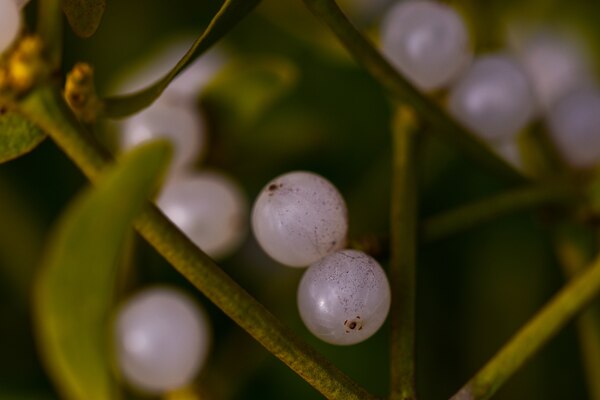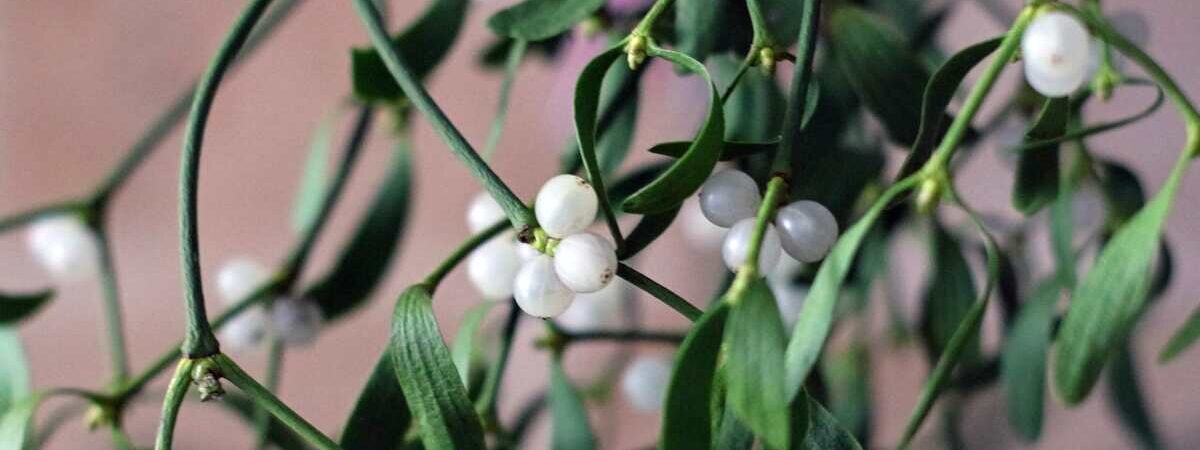Mistletoe is a Christmas tradition that is abundantly used in Christmas festive decoration, but why have this beauty just at Christmas when you can grow your mistletoe throughout the winter?
This is a beautiful parasitic shrub known for its simplicity along with green shrub and white berries. Apart from that, it can be grown easily in your yard by just following certain simple steps. Here is our guide on how to grow mistletoe and care for mistletoe.
So dive into the article below to find out how to grow your mistletoe in your very own garden.
Plant Overview
Mistletoe scientifically termed the Viscum album, is a parasitic, evergreen, beautiful, and hardy shrub which is covered by white berries that appear like peas throughout the winter months.
This shrub is a hemiparasitic plant that takes the help of branches of several tree species to grow on and it obtains it requires water and mineral nutrients from the host tree. However, as it grows its green leaves, it can produce its food via photosynthesis.
Varieties of Mistletoe

There are more than 1,500 varieties of Mistletoe found in the world. Among these popular varieties, there are at least 30 types of mistletoe varieties are found in North America. Some of these species are native to the place, whereas several other species are European or Asian species that have been naturalized.
The following are the most common varieties of this plant:
American mistletoe (Phoradendron leucarpum)
American mistletoe is the most common species which is grown in North America. It is used for holiday decoration purposes. This variety is normally harvested in the wild rather than deliberately planting it in residential landscapes.
European mistletoe (Viscum alum)
The European mistletoe is the traditional holiday shrub that is more prevalent in Europe and Asia. However, It has been naturalized in some areas of North America.
Big leaf mistletoe (P. tomentosum ssp. macrophyllum)
Big leaf mistletoe is a popular species that is found in the Southwest United States, from California to west Texas. It is also a popular plant like other species which are used for holiday decor use.
Dwarf mistletoe (Arceuthobium spp.)
Dwarf mistletoe is a variety that is regarded as invasive in much of North American countries. There are several different species of this dwarf species found on the earth which is native to different areas of North America. Each of them has a different favorite host tree.
How to grow mistletoe?

Mistletoe grows as a parasitic plant in the host branches of apple, hawthorn, poplar, and lime trees. However, the most common host tree for this plant is the apple tree. Although it is considered a parasite plant, it does not kill a tree where it grows but it affects the tree’s growth and harvest yields.
The best time for this plant to cultivate is in February or March. If you have already stored your berries, you just need to rehydrate them overnight by immersing them in a bowl of water. Or else you can buy the seeds of this plant from any nursery.
- After gathering the seeds, select your host tree which we discussed above, or any shrub for which most of the Rosaceae family are also suitable.
- Squeeze your mistletoe berries or seeds, one at a time, so that the sticky jelly-like substance from the seed will emerge containing black seeds. It is perfectly safe if you are squeezing it between your fingers, but make sure that your hands are washed thoroughly afterward.
- Spread that jelly-like viscin which is complete with the seeds, onto the chosen host branches. Do this process with more than three or four young branches, which should be between 5 and 10cm in diameter. It is always recommended to choose your branches away from the center of the tree, as high as the tree, and avoid the trunk so that your plant can get maximum light.
- Label the branches where you have spread the seeds, this may help you to deter birds.
- Leave your plant to germinate, which would eventually happen in March or April. Although Some of them will be eaten by birds or invertebrates, hopefully, there will be enough seeds that will have been planted to ensure some success.
Once the germination of the seeds takes place, the growth will be slow and it may take up to more than 3 years before the plant even develop growing leaves. From year 4, the growth will be accelerated and branches will develop and finally in year 5, small white berries should start appearing.
How to care for mistletoe?

The mistletoe is very easy to take care of. The caring guide for this plant is given below.
Light
Although American mistletoe plants can grow and cope with shady environments, they do their best in a sunny or semi-shade position as they can gain additional nutrition from the process of photosynthesis. So it is recommended to place your plant in the high branches of host to ensure better growth of the plant.
Water
This beautiful semiparasitic plant gains its water requirement from the host tree. So no additional watering is required.
Temperature and Humidity
The mistletoe plant is a leafy plant variety that requires the temperate conditions of USDA zones 5 to 9 to grow and survive. So those regions which are experiencing harsh, sub-freezing temperatures or exceptionally dry conditions are not be suitable for growing this plant.
Humidity
This plant prefers to thrive well in fairly humid conditions in the wild. In the wild regions, they tend to be popularly found in low-lying ground zones which are fairly humid.
So the areas which is experiencing very dry conditions will not be suitable for the cultivation of this plant.
Fertilizer
Mistletoe do not require any kind of direct feeding, as it can get its nutrients from its host plant. But it’s advisable to maintain your host tree or shrub well-fed in order to maintain the health of the host plant as it supports the parasitic mistletoe.
How to prune mistletoe?
If you want to prune your mistletoe, you can simply climb up into the tree or can use a telescoping tree saw.

Then, you should just cut away the branches of the shrub to attain the size and shape you want. Don’t worry, this sucker will grow right back so do as much (or as little) pruning as per your requirement or want.
Basically, pruning should be done in the spring season after you’ve harvested any of the berries you want to keep for planting or to prevent further spread and growth of the plant, but before the host tree sends out new growth.
If things seem to go out of control or your plants may seem stressed, you just need to remove the plants by pruning off the branches they’re growing on.
How to propagate mistletoe?

The propagation of the mistletoe plant can be a little tricky. You just require the right conditions and a suitable tree host to propagate your plant.
You can use the following process to propagate your plant.
- Harvest some mature and ripe berries from an existing mistletoe clump on a tree in late fall.
- Squash the white berries into a pulp, then press it into the bark on the lower side of the strong and healthy branch of the host trees. It is ideal to use the same species as the tree from which you harvested the berries.
- Wait until the following spring, and check to see if small leaves start to sprout out from the pulp. No watering or care is required, the mistletoe will draw its required nutrients and moisture from the air and from the host tree.
Conclusion
Mistletoe is a beautiful flowering plant that can add beauty to your garden and also can be used as beautiful decor.
If you look up during the winter days when all the deciduous plants have dropped their leaves, you might findout something beautiful still growing up there, tucked in the bare branches.
This is what the mistletoe plant is. More similar to gardening in the sky, and cultivating plants on the branches of a tree
So If you’re ready to have some adventure and add beauty to your garden, get ready, bring a mistletoe, and here you go!
You may also like to read
How To Grow And Care For African Violets – An Effective Guide






